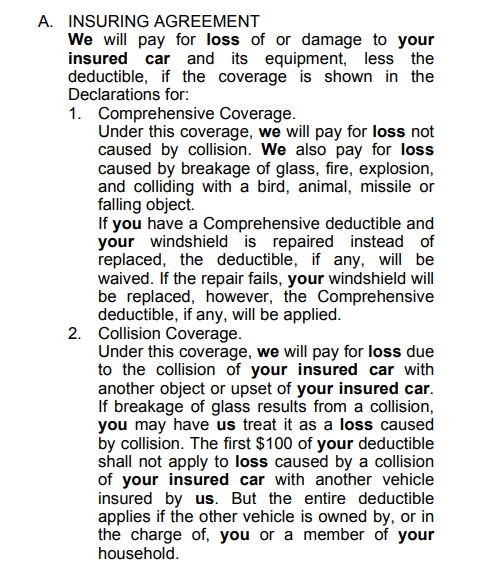The 2-Minute Rule for Pacific Prime
The 2-Minute Rule for Pacific Prime
Blog Article
Some Ideas on Pacific Prime You Should Know
Table of ContentsWhat Does Pacific Prime Mean?Some Known Questions About Pacific Prime.Getting The Pacific Prime To WorkThe Ultimate Guide To Pacific PrimeThe smart Trick of Pacific Prime That Nobody is Talking About

This is since the information were collected for a duration of solid economic efficiency. Of the approximated 42 million people that were without insurance, all but concerning 420,000 (about 1 percent) were under 65 years old, the age at which most Americans come to be eligible for Medicare; 32 million were adults in between ages 18 and 65, about 19 percent of all adults in this age; and 10 million were youngsters under 18 years of age, regarding 13.9 percent of all youngsters (Mills, 2000).
These estimates of the number of individuals without insurance are generated from the annual March Supplement to the Existing Populace Survey (CPS), carried out by the Demographics Bureau. Unless or else noted, national quotes of individuals without health and wellness insurance policy and proportions of the population with various kinds of coverage are based upon the CPS, the most commonly made use of resource of estimates of insurance coverage and uninsurance prices.
Some Known Incorrect Statements About Pacific Prime

Still, the CPS is specifically useful due to the fact that it generates yearly quotes fairly rapidly, reporting the previous year's insurance coverage approximates each September, and due to the fact that it is the basis for a constant set of price quotes for more than twenty years, enabling analysis of fads in coverage over time. For these factors, along with the considerable usage of the CPS in other studies of insurance policy protection that exist in this report, we count on CPS price quotes, with restrictions noted.

The estimate of the variety of without insurance people expands when a populace's insurance coverage status is tracked for numerous years. Over a three-year period starting early in 1993, 72 million people, 29 percent of the united state population, were without coverage for at least one month. Within a single year (1994 ), 53 million individuals experienced a minimum of a month without insurance coverage (Bennefield, 1998a)
6 out of every ten uninsured adults are themselves employed. Working does boost the probability that one and one's family participants will have insurance policy, it is not an assurance. Even participants of households with two permanent breadwinner have virtually a one-in-ten possibility of being uninsured (9.1 percent uninsured price) (Hoffman and Pohl, 2000).
Examine This Report about Pacific Prime
New immigrants represent a substantial proportion of individuals without health insurance policy. One evaluation has associated a substantial portion of the recent development in the dimension of the U.S. uninsured population to immigrants that got here in the country between 1994 and 1998 (Camarota and Edwards, 2000). Recent immigrants (those that came to the United States within the previous 4 years) do have a high price of being uninsured (46 percent), but they and their kids make up simply 6 percent of those without insurance country wide (Holahan et al., 2001).
The partnership in between medical insurance and accessibility to care is well developed, as recorded later on in this phase. The relationship in between wellness insurance policy and wellness end results is neither straight nor easy, a considerable professional and wellness solutions research study literature links wellness insurance policy coverage to improved access to care, better top quality, and enhanced personal and population health standing.
Degrees of analysis for taking a look at the impacts of uninsurance. This discussion of health insurance policy protection concentrates mostly on the U.S. populace under age 65 since essentially all Americans 65 and older have Medicare or other public coverage. In addition, it focuses specifically on those with no medical insurance for any kind of length of time.
Getting My Pacific Prime To Work
The troubles encountered by the underinsured remain in some respects similar to those faced by the uninsured, although they are typically less serious. global health insurance. Uninsurance and underinsurance, however, involve distinctly different plan concerns, and the strategies for resolving them might vary. Throughout this research study and the 5 reports to follow, the main focus is on persons with no health insurance and thus Continue no assistance in spending for healthcare beyond what is offered through charity and safety internet establishments
Health insurance is a powerful variable influencing invoice of care because both patients and doctors react to the out-of-pocket rate of services - https://pacificpr1me-2.creator-spring.com. Health insurance, however, is neither needed neither sufficient to access to medical solutions. The independent and direct effect of health and wellness insurance policy coverage on access to wellness services is well established.
Others will certainly get the healthcare they require even without health and wellness insurance, by paying for it expense or seeking it from providers that offer treatment cost-free or at highly subsidized prices. For still others, medical insurance alone does not guarantee receipt of treatment due to the fact that of various other nonfinancial barriers, such as an absence of healthcare providers in their area, restricted accessibility to transportation, illiteracy, or linguistic and cultural differences.
6 Easy Facts About Pacific Prime Explained
Formal research study concerning uninsured populaces in the USA dates to the late 1920s and very early 1930s when the Committee on the Expense of Healthcare generated a series of records about financing medical professional office gos to and hospital stays. This concern became prominent as the numbers of medically indigent climbed up throughout the Great Clinical depression.
Report this page